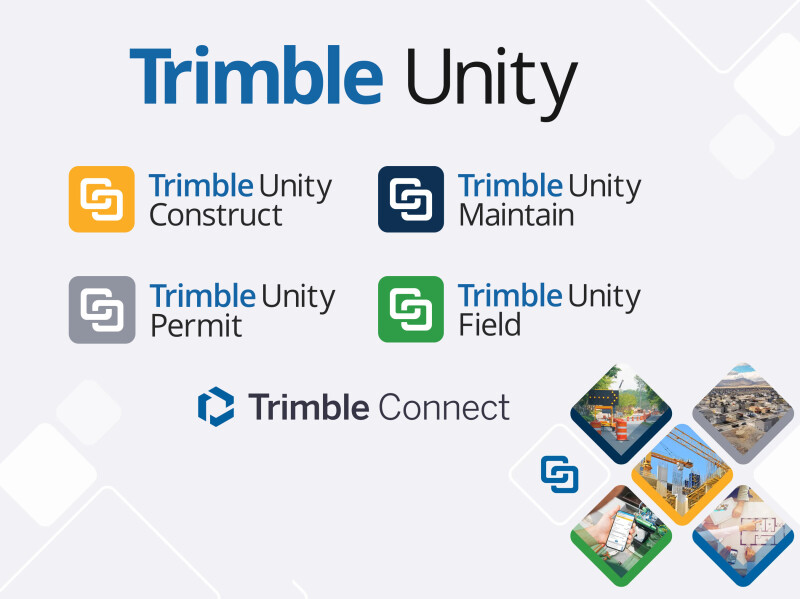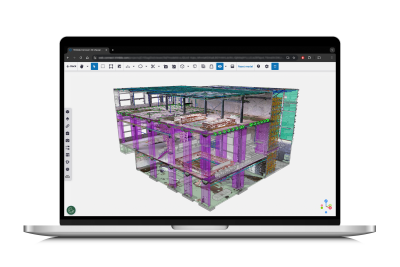A truism for any industry is that the more connected a workflow is, the less of a chance exists that things along that flow will go awry. Simply put, the more times a worker has to shift between platforms or techniques for a given step, the greater chance something will be messed up or altered along the way, with potentially harmful downstream effects. In the AEC industry, this is certainly true given the amount of stakeholders involved in a given project and the number of moving parts being worked along with what is often a tight deadline and budget. Because of that, we’ve seen trends in more interoperability between separate platforms as well as acquisitions from big players to allow more work to be done under their umbrella.
Last week, we got an example of a company big enough to create their own suite of connected products to do just that. Trimble announced at the end of June the release of a new asset lifecycle management software suite, to be known as Trimble Unity. The suite brings together five capabilities and, in Trimbles words, “enables owners of capital projects and public infrastructure to efficiently plan, design, build, operate, and maintain their assets using centralized data and connected digital workflows.”
Trimble being, of course, one of the biggest names in this space with customers at every level of a building's life cycle, they have insights into not only what stakeholders at every stage of a project are looking for, but also what makes the most sense in terms of connecting these experiences.
"We've brought together the very best of our heritage solutions to provide our customers with even more value for their investment in the Trimble products and services they have trusted for years," said Shelly Nooner, vice president of innovation and platform for Trimble's Owner and Public Sector. "By making relevant data accessible to stakeholders across the entire asset lifecycle, Trimble Unity helps owners and their collaborators make better-informed decisions at every phase."
As noted above, Trimble Unity is coming in the form of five connected “capabilities,” most of which are available today. Those capabilities are as follows:
Trimble Unity Construct: As the name suggests, this capability is focused on the construction phase of the lifecycle, described by the company as a cloud-based project and program management capability that “provides insights to improve process control and reduce cycle times.” Currently, this capability is available under the legacy name e-Builder, with Trimble indicating its availability as Trimble Unity Construct coming in a “future release.”
Trimble Unity Maintain: This capability is, again, somewhat self-explanatory as it is for maintenance and asset management for infrastructure. This capability is built around GIS tools to “streamline work activity, planning, and analysis to optimize resource allocation and infrastructure reinvestment.”
Trimble Unity Permit: This capability is more on the niche side, filling a specific but very important function around permitting. Any project can be derailed by mistakes with permitting and land management, making this capability crucial to have connected to the rest of the project.
Trimble Connect: Here we have arguably the most important capability from this entire suite as the one that brings everything together as a connected data environment. Trimble remarks that this “unifies asset data in files, native file formats, and 3D models to streamline accessibility and collaboration.”
Trimble Unity Field: Finally, Trimble includes a mobile solution that can be used across stakeholders which they say provides a “role-based, GIS-centric data collection and visualization experience for project management and long-term asset maintenance workflows.”
The entirety of the Trimble Unity suite is available in a single-contract subscription that they are calling the “Trimble Unity Asset Lifecycle Management subscription.” As noted above, Trimble Unity Construct is currently available as e-Builder. Additionally, Trimble Unity Field is expected to be available in August 2024. Otherwise, the other capabilities are available with a subscription today.
All of this relates back to the overarching point made at the top of this post that having this kind of connected solution is not only helpful for AEC projects, but arguably necessary. With many stakeholders generally working independently, and often with different data formats and strategies, having everything under a single umbrella makes life so much easier for asset owners and project managers. In their release of the news, in fact, Trimble cites a “combination of studies” analyzed by Woolpert – for which there was a webinar with Trimble and Woolpert representatives – which indicate that this kind of asset lifecycle management approach can reduce the total cost of asset ownership by as much as 40 percent.
"Trimble Unity is designed to make it easier for asset owners to achieve core goals — improve asset performance, enhance stakeholder collaboration and optimize capital and operational budgets — as efficiently as possible," said Hoagland. "Trimble is uniquely positioned to provide all these capabilities in a single solution suite, and we're already seeing owners reap the benefits of a lifecycle-focused approach at local governments, state DOTs, airports, transit authorities, healthcare facilities and educational institutions."






